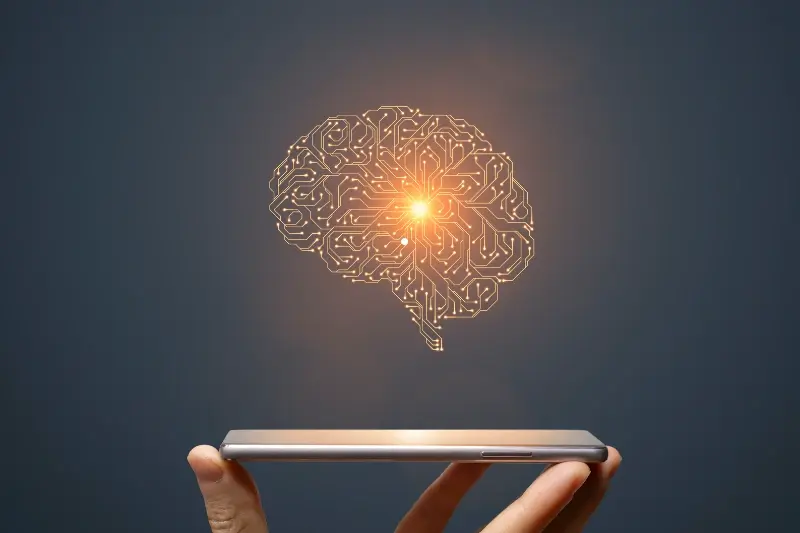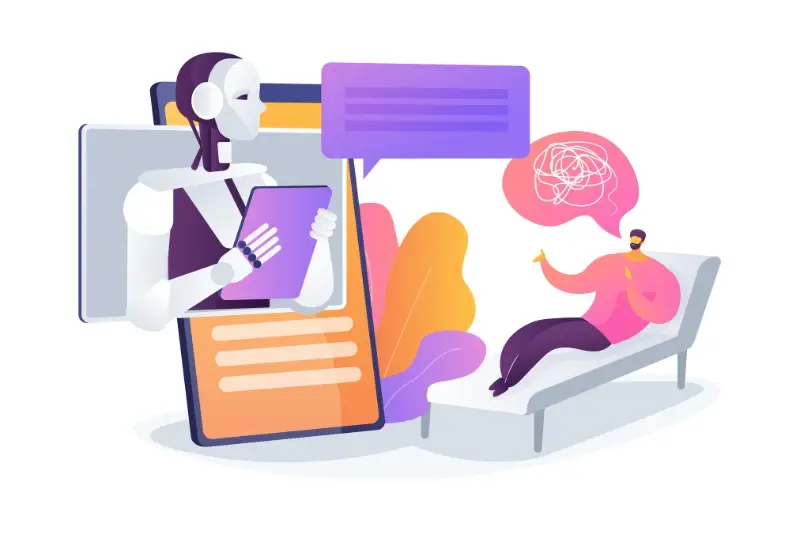The Psychology Of Mobile App Development Complete Guide 2025
I've been designing mobile apps for over eight years now and I'll let you in on something that took me far too long to figure out—most apps fail not because they're broken or ugly, but because they completely ignore how people's minds actually work. You can have the most beautiful interface in the world, but if it doesn't connect with users on a psychological level, you're basically shouting into the void.
Think about the apps you use every day. Instagram, TikTok, your banking app, even that simple notes app—they all tap into something deeper than just functionality. They understand what makes you tick, what frustrates you, and what keeps you coming back for more. This isn't accidental; it's psychology-driven app development at its finest.
The best apps don't just solve problems—they understand the human behind the screen
That's what this guide is really about. We're going to explore how behavioural app design works, why mobile app psychology matters so much, and how understanding user psychology apps can transform your development process. I've seen too many brilliant app ideas crash and burn because developers focused solely on features whilst completely ignoring the human element. Don't let that be your story.
Why Our Brains React to Apps the Way They Do
Our brains are quite predictable when it comes to technology—something I've learnt after years of watching people use the apps we build. The human brain operates like it's still living thousands of years ago, looking for patterns and shortcuts to help us survive. When someone opens an app, their brain immediately starts asking questions: Is this safe? Will this help me? Can I trust this?
This prehistoric wiring explains why we get frustrated when an app takes more than three seconds to load, or why we abandon apps that feel confusing. Our brains are designed to conserve energy, so anything that requires too much mental effort gets rejected quickly. That's why successful apps feel intuitive—they work with our brain's natural shortcuts rather than against them.
What Triggers Our Brain's Attention
Your brain pays attention to certain things automatically, and smart app developers know exactly what these are:
- Movement and animation (but not too much—it becomes annoying)
- Bright colours, particularly red and orange
- Faces and human-like characters
- Numbers and progress indicators
- Anything that looks clickable or interactive
The interesting bit is that our brains also release small amounts of dopamine when we complete tasks or receive notifications. This chemical reward system is why people become attached to their favourite apps—each tap, swipe, and completed action gives us a tiny hit of satisfaction that keeps us coming back for more.
The Science Behind User Behaviour and App Engagement
Right, let's talk about what actually happens inside people's heads when they use your app. There's proper science behind this stuff—not just guesswork or trendy theories that sound clever at conferences.
When someone opens your app, their brain releases a tiny hit of dopamine. That's the same chemical that makes you feel good when you eat chocolate or get a text from someone you fancy. But here's the thing—and this is where most apps get it wrong—your brain doesn't just want the reward, it craves the anticipation of getting it.
The Variable Reward System
Think about why people get addicted to slot machines. It's not because they always win; it's because they never know when they might win. Your app needs this same unpredictability built in. Maybe it's a notification that sometimes has exciting news, or a feature that occasionally surprises users with something special.
The Effort Justification Effect
People value things more when they've worked for them. If someone has to put effort into learning your app or completing tasks within it, they'll actually like it more—provided the effort feels worthwhile and not frustrating.
Track which features users spend the most time learning. These often become their favourite parts of your app because they've invested mental energy in mastering them.
The key is balancing challenge with achievement. Too easy and people get bored; too hard and they give up entirely.
Building Apps That Match How People Think
Here's what I've learned after years of watching people use apps—our brains are lazy. Not in a bad way, mind you, but they're constantly looking for shortcuts and patterns to make life easier. When someone opens your app, their brain is already making snap decisions about whether it's worth their time or not.
Think about how you use your phone. You don't read every button or menu item carefully; you scan, you guess, you tap based on what feels right. That's exactly how everyone else uses apps too. So when we're building an app, we need to work with these mental shortcuts instead of against them.
Making Things Feel Familiar
People expect certain things to work in certain ways. A shopping cart icon means "buy stuff", a magnifying glass means "search", and swiping left usually means "delete" or "dismiss". Fighting these expectations is like swimming upstream—possible, but exhausting for your users.
I always tell my team to put the most important stuff where people naturally look first. That's usually the top-left corner, then they scan right and down. If your main action button is buried at the bottom of a long scroll, you're making people work too hard.
Reducing Mental Load
Every choice you give someone is a tiny decision they have to make. Too many choices and their brain starts to feel tired—then they just close your app and do something else instead. Keep things simple, group related options together, and always make the next step obvious.
Creating Emotional Connections Through Smart Design
Here's something I've learned after years of building apps—people don't just use apps, they form relationships with them. Sounds a bit mad when you think about it, but it's true! The apps that succeed are the ones that make users feel something. Maybe it's excitement when they open Instagram, or relief when they complete a task in their productivity app.
The secret lies in understanding that every design choice triggers an emotional response. Colours affect mood—warm oranges and reds create energy whilst cool blues make people feel calm and trust your app more. The words you use matter too; saying "You're almost there!" feels much more encouraging than a cold progress bar sitting at 80%.
Micro-interactions That Make People Smile
Those tiny animations when someone likes a post or completes a level? They're not just pretty decorations. They're psychological triggers that create positive feelings and make users want to repeat the action. I've seen apps transform their retention rates just by adding a satisfying little bounce when users tap buttons.
The best mobile app psychology comes from treating your users like humans, not statistics
Personalisation is where behavioural app design really shines. When your app remembers someone's preferences or celebrates their achievements, you've moved beyond being just another tool—you've become part of their daily routine, maybe even their identity.
Understanding What Motivates People to Keep Using Apps
Getting someone to download your app is one thing—keeping them coming back is a completely different challenge. I've watched countless apps with brilliant launches fade into obscurity because they failed to understand what actually drives long-term usage. The truth is, people don't keep using apps just because they're pretty or functional; they stick around because the app makes them feel something.
Think about the apps you use every day. You probably can't delete them without feeling a bit anxious, right? That's not an accident. The most successful apps tap into basic human needs and desires. They make us feel connected, accomplished, entertained, or informed. Some even make us feel important or part of something bigger.
The Main Motivators That Keep People Hooked
- Progress and achievement—people love seeing themselves improve or complete tasks
- Social connection—we're wired to interact with others and share experiences
- Entertainment and escapism—apps that help us unwind or have fun
- Convenience and time-saving—making life easier in meaningful ways
- Learning and discovery—satisfying our natural curiosity about the world
The apps that understand these motivators build them right into their core experience. They don't just solve a problem; they make people feel good about using the solution. That emotional connection is what transforms a one-time user into someone who can't imagine their phone without your app.
Common Psychology Mistakes That Kill App Success
After working with hundreds of clients over the years, I've noticed the same psychology mistakes cropping up again and again. The thing is, most developers don't even realise they're making these errors—they're too busy focusing on the technical stuff to notice how their users actually think and behave.
The biggest mistake I see? Assuming people want loads of features. I get it, you want to give users value for money, but here's what actually happens: people open your app, see twenty different buttons and options, then immediately close it again. Their brains literally can't process all that choice. It's called decision paralysis, and it's killing your download-to-active-user conversion rate.
The Most Deadly Psychology Mistakes
- Ignoring the three-tap rule—if users can't do what they want in three taps, they'll give up
- Using confusing icons that don't match what people expect
- Forgetting that people scan, they don't read—walls of text are useless
- Not understanding that people hate making accounts before they see any value
- Assuming users will figure things out themselves
Track where users drop off in your app flow. Those exit points reveal exactly where you're fighting against human psychology instead of working with it.
The fix isn't complicated, but it does require thinking like your users instead of like a developer. Start with one clear action per screen and build from there.
Putting Psychology Principles Into Practice When Building Apps
Right then, let's talk about actually doing this stuff rather than just reading about it. I've worked with dozens of development teams over the years and the ones that get psychology right don't just wing it—they build it into their process from day one. They start by mapping out user journeys with genuine empathy, asking themselves what their users are actually feeling at each step, not just what they're clicking.
Start With Your Onboarding Flow
Your onboarding is where psychology matters most. People make snap judgements about your app within seconds, so you need to trigger the right mental shortcuts immediately. Show value before asking for anything—don't make people create accounts before they understand what you do. Use progressive disclosure to avoid overwhelming new users; reveal features gradually as they become relevant.
Test Real Emotional Responses
Here's something most teams skip: actually watching people use their app. Not just checking if buttons work, but observing facial expressions and body language. When someone frowns or hesitates, that's your brain fighting against your design. Set up simple user testing sessions where you can see these reactions—it's worth more than any survey data. The apps that succeed long-term are the ones that feel effortless to use because they match how our minds naturally work.
Conclusion
After eight years of building apps for everyone from two-person startups to massive brands, I can tell you that psychology-driven app development isn't just a nice-to-have anymore—it's what separates the apps people love from the ones they delete after five minutes. We've covered a lot of ground here, from understanding how our brains process information to creating those sticky habits that keep users coming back.
The truth is, most app failures aren't technical problems; they're psychology problems. I've seen brilliant developers build perfectly functional apps that nobody wants to use because they ignored how people actually think and behave. Don't be that developer!
Start small with what we've discussed. Pick one or two behavioural app design principles and test them properly. Maybe it's simplifying your onboarding flow or adding some well-timed rewards. You don't need to revolutionise everything at once—small changes based on solid user psychology can make a massive difference to your engagement rates.
Mobile app psychology isn't about manipulating people (please don't do that). It's about understanding what makes your users tick and designing experiences that feel natural, helpful, and dare I say it, enjoyable. When you get that balance right, everybody wins.
Share this
Subscribe To Our Blog
You May Also Like
These Related Stories

How to Build AI Powered Apps With Psychological Insights

AI Meets Psychology: Next-Gen Mobile App Development





